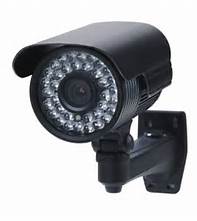Password Strength Meter
Want to develop tough-to-crack passwords that resist infiltration?
Follow these 10 rules:
Follow these 10 rules:
- Avoid using dictionary words. These passwords are easy for hackers to figure out using an electronic dictionary.
- Donít use personal information. Any part of your name, birthday, Social Security number, or similar information for your loved ones is a bad password choice.
- Avoid common sequences, such as numbers or letters in sequential order or repetitive numbers or letters.
- If the web site supports it, try to use special characters, such as !, @, $, %, ^, &, *, (, ), -, _, =, +, [, ], {, }, \, |, <, >, /, and ?. Most passwords are case sensitive, so use a mixture of upper case and lower case letters, as well as numbers.
- Passwords become harder to crack with each character that you add, so longer passwords are better than shorter ones. A brute-force attack can easily defeat a password with seven or fewer characters.
- To help you easily remember your password, consider using the first letter from each word in a sentence, a phrase, a poem, or a song title as a password. Be sure to add in numbers and/or special characters.
- Create different passwords for different accounts and applications. That way, if one password is breached, your other accounts wonít be put at risk too. Do not use the same or variations of the same password for different applications.
- Despite admonitions to the contrary, one easy way to remember your passwords is to write them down and keep them in a securely locked place. Never leave them on a Post-It note on your monitor, in an address book, in a desk drawer, or under your keyboard or mouse pad (or any other obvious place).
- Consider using a secure password manager. The Firefox browser has a password manager already built in. The others are reviewed at: https://www.cnet.com/news/the-best-password-managers-directory/
- If you have already established a password that is not strong, change it! Web sites have a variety of procedures that govern how you can change your password. Look for a link (such as "my account") somewhere on the site's homepage that goes to an area of the site that allows password and account management.



 Mt Washington Wx CAM
Mt Washington Wx CAM




